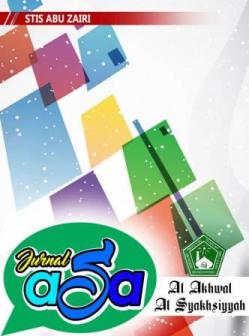IMPLIKASI PERGESERAN KONSEP GENDER TERHADAP FORMULASI HUKUM ISLAM
DOI:
https://doi.org/10.58293/asa.v5i2.74Keywords:
Implikasi, gender, Formulasi Hukum IslamAbstract
This research is quantitative in nature. The data required in this study were collected using the following techniques: interviews, questionnaires and literature studies. The data collected was then processed by editing and coding techniques and then transferred into data recapitulation. Furthermore, the data that has been processed is analyzed by quantitative methods using different test techniques with the chi kwadrad formula and relationship test techniques with the product moment test formula. These techniques were used as estimation tools to determine the differences in attitudes based on the gender of the respondents with the rigidity and flexibility of their responses to the shifting concept of gender. Then the results of the analysis are presented in a descriptive-qualitative manner so as to illustrate the rigidity and flexibility of Islamic legal formulations and their gender shift patterns. From this research, it is assumed that the findings will be obtained that the responses of lecturers and students, both men and women, to the shifting concept of gender do not show any significant differences. In this case, lecturers and students, both male and female, respond to the shifting concept of gender with relatively similar attitudes and views and agree that gender is a socio-cultural construction of the standard image in the division of labor between men and women and not as nature as sex.
Downloads
References
Arief Budiman, Pembagian Kerja Secara Seksual, (Jakarta : Gramedia, 1985).
Arkoun, Muhammad, Islam dan Nalar Modern, (Jakarta : INIS, 1993);
Asa, Syu’bah, “Wanita : Di Dalam dan di Luar Fiqh” dalam Pesantren, Nomor 2/Volume VI/1989.
Dhofier, Zamakhsyari, Tradisi Pesantren, (Jakarta : LP3ES, 1985);
Faqih, Mansour, Gender dan Transformasi Sosial, (Yogyakarta : Pustaka Pelajar, 1995);
--------, “Diskriminasi dan Beban Kerja Perempuan : Perspektif Gender”dalam “Wacana Perempuan dalam Keindonesiaan dan Kemodernan” ed. H. Bainar (Jakarta : Pustaka Cidesindo, 1998);
Fachry Ali, “Ulama dan Politik” dalam M. Dawam Raharjo, ed. Pergulatan Dunia Pesantren, Membangun dari Bawah”, (Jakarta : P3M, 1985);
Horton, Paul B dan Robert L. Horton, Introductory Sociology,(Illinois : Dos Jones Irwin, 1982);
Jefries, Fincant dan H Edward Ransfor, Social Stratification, A Multiple Hierarchy Approach, (Boston : Allyn and Bacon, Inc., 1980);
Julia Cleves Mosse, Gender dan Pembangunan, (Yogyakarta : Pustaka Pelajar, 1996);
Lamanna, Mary Ann dan Aknes Riemann, Mariages and Families, (Delmon-California-Wodsworth : Publishing Company, 1985);
Lawang, Robert MZ, Sistem Soial Indonesia, (jakarta : Universitasa Terbuka, 1985).
Munawir Syadzali, Itihad Kemanusiaan, (Jakarta : P. Gramedia, 1997);
Rahman, Fazlur, Islam, (Bandung : Mizan, 1992);
Ratna Saptari & Brigitte Holzner, Perempuan Kerja dan Perubahan Sosial, (Jakarta : Grafitti, 1997);
Suharsimi Arikunto, Prosedur Penelitian, Suatu Pendekatan Praktek, (Jakarta : PT. Rineka Cipta, 1993);
Trisakti Handayani dan Sugiarti, Konsep dan Teknik Penelitian Gemder, (Malang : IMM Press, 2002);
Ubaidillah, U. (2023). THE PAMUGIH TRADITION IN MADURESE MARRIAGE CULTURE AND ITS IMPLICATIONS FOR THE SAKINAH FAMILY. At-Turost: Journal of Islamic Studies, 13-32.
Ubaidillah, U. (2021). Ijtihad Imam Asy-Syafi'i (Analisis Kritis terhadap Qaul Qadim dan Qaul Jadid). MOMENTUM: Jurnal Sosial dan Keagamaan, 10(1 May), 1-28.
Young, Kimbell,”Mengukur Pendapat dan Sikap, Dimensi-dimensi Psikologi Sosial”, Mulyadi Wasesa, ed. (Yogyakarta : Hamindita, 1986).
Downloads
Published
How to Cite
Issue
Section
License
Copyright (c) 2023 Siti Kholida

This work is licensed under a Creative Commons Attribution 4.0 International License.






